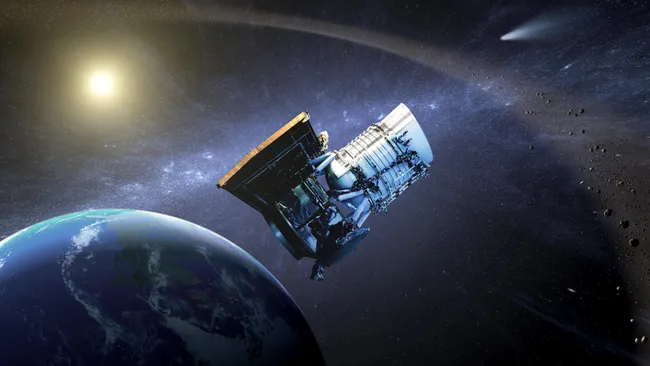
NASA's sole space telescope dedicated to planetary defense, NEOWISE (Near-Earth Object Wide-field Infrared Survey Explorer), has deactivated its transmitter for the last time, ending a 15-year mission of spotting near-Earth asteroids and comets.
Originally designed for a brief seven-month mission, NEOWISE far exceeded expectations. It discovered over 200 new near-Earth objects, including 25 comets, and collected extensive data on 44,000 other solar system bodies, according to NASA.
The mission officially concluded on July 31. NEOWISE's operational life is ending as the solar maximum period threatens to pull the satellite into Earth's atmosphere, where it will burn up in late 2024. Without propellant to adjust its orbit, the spacecraft has been gradually descending towards Earth.
Amy Mainzer, a professor at the University of California, Los Angeles, and principal investigator for NEOWISE and its upcoming successor, NEO Surveyor, praised the telescope's extended service. "We gained far more than we anticipated," she said.
NEOWISE was initially launched in 2009 as WISE (Wide-field Infrared Survey Explorer). Intended to map the sky in infrared light, WISE surpassed expectations with its sensitivity. The mission was extended and renamed NEOWISE to survey the asteroid belt. After depleting its coolant and going into hibernation, NEOWISE resumed operations in 2013 to focus on near-Earth objects.
Among its discoveries, the most notable was comet C/2020 F3 NEOWISE, which passed by Earth in July 2020.
NEOWISE’s retirement creates a temporary gap in planetary defense. Currently, no NASA telescope is dedicated solely to near-Earth object detection. However, the NEO Surveyor, an advanced infrared telescope, is set to launch no earlier than 2027. This telescope will perform regular sky scans and use a solar shade to detect asteroids near the Sun—a crucial area currently lacking coverage.
Until then, ground-based observatories like the Catalina Sky Survey and Pan-STARRS are monitoring for near-Earth asteroids. These surveys have successfully tracked over 34,000 near-Earth asteroids, and none are expected to threaten Earth in the next century.

:max_bytes(150000):strip_icc():format(webp)/alec-baldwin-torino-film-festival-121824-3cf7cfbe5c4f4bcbb9197de4de062ea6.jpg?strip=all&resize=370,370)
:max_bytes(150000):strip_icc():format(webp)/Jimmy-Fallon-and-Prince-Harry-092624-baa1362d743d4f39a7d60bf57eb6e8b2.jpg?strip=all&resize=370,370)
:max_bytes(150000):strip_icc():format(webp)/randy-moss-121324-40b858c71b0f40bfa399e2fe00152b2a.jpg?strip=all&resize=370,370)
:max_bytes(150000):strip_icc():format(webp)/scandal-kerry-washington-121824-c51a2b5f0ef741268474bec2498c285a.jpg?strip=all&resize=370,370)
